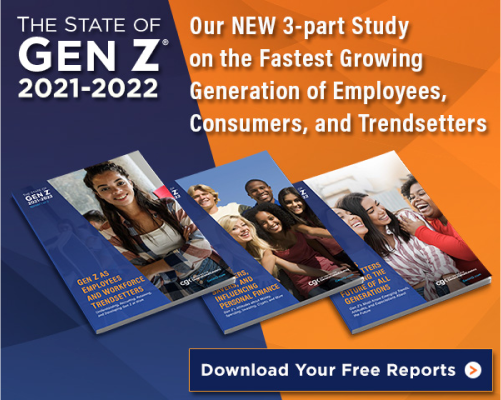- When it comes to technology, many workers are declaring that “good enough” is not enough any longer.
- It is no longer just the younger generations leading the technology charge.
- Leaders can better adapt work to harness the power behind the digital-first revolution.
It’s hard to believe that we are just over a year since the “Work-From-Home Experiment” began and digital transformation for many businesses kicked into accelerated gear.
Even harder to believe is that it was February of last year when The Center for Generational Kinetics was invited to collaborate with Adobe Workfront on their popular “State of Work” research study. This annual study by Adobe Workfront dives into new insights to better understand how Millennials and Gen Xers approach collaborative work in the current environment. The study was released just before the massive shift from in-person to remote work began—changing almost everything overnight.
Adobe Workfront decided to lead the study again later in 2020 to bring to light the changes that had taken place in the remote work experience. There is no way we could have anticipated the scale of how digital work revolutionized business in less than a year!
“With just eight months between the two studies featured in this report, a change of even three-to-five percentage points is statistically significant and worth noting. The fact that in some of the uncovered answers we saw changes of five points, ten points, or even more, is remarkable.” –CGK President Jason Dorsey
Good Enough Technology Tools are No Longer Enough For Today’s Workers
Digital tools and technology are no longer optional, they are necessary for businesses to operate and employees of every generation to deliver results. Even workers who may have been resistant to technological change or adoption in the past have come a long way toward seeing the benefits and getting on board with digital transformation.
The State of Work study by Adobe Workfront uncovered that the number of workers who now feel that technology is pertinent in managing their role increased by 24 percentage points, while workers who attribute technology to their ability to do their very best work increased by 18 percentage points.
At the same time, the study found that so-so, or poor digital strategy, can no longer be ignored as a threat to business and worker performance. The number of workers—in less than a year—who have left their jobs due to outdated technology has risen dramatically from 21% to 32%. While 49% (up from 33%) of workers say they are likely to leave their job if they feel frustrated with the technology their company is using!
More than ever, technology is becoming a major determining factor for employees to stay with a company or pursue a new job somewhere else.
Concerns About Workplace Technology Are Cross-Generational
No longer is it the younger generation in the workforce that is often leading the technology revolution. In fact, the study found that Gen Xers who were less likely to leave their job due to lack of new, current technology has shifted significantly. Whereas now 48% (up 24 percentage points!) of Gen Xers would leave their job because technology offered by their employer is not keeping up. That is a huge shift in a short period of time.
The bottom line: Millennials and Gen Xers alike are no longer willing to compromise when it comes to technology in the workplace. This could have a significant impact on companies long-term, from recruiting and retention to training, collaboration, and talent development.
Priorities Are Shifting For Today’s Workers
Today’s employees want to communicate and collaborate quickly, creatively, and effectively. They are relying on technology more than ever before since the shift in remote working took place due to the pandemic. The State of Work study found that more than 56% of workers see technology as an important way to foster collaboration in these new times, and 68% said they rely on technology to help bolster creativity and innovation. Those are big numbers when you consider the size of these generations and that in sum they represent a majority of most workforces.
Leaders Can Better Manage Work to Harness the Digital-First Revolution
The changes of the past year and remote working have led many workers to more of an “always-on” perception, which can affect both engagement and motivation. In order to keep up with this new expectation, businesses have to focus on how to up their technology game. Today’s workers are used to instant gratification from technology in their personal lives (Amazon Prime, Alexa, Siri, and many more), and individuals are increasingly expecting the same from their professional lives.
Building digital resilience for the post-pandemic world will be key for businesses to not only survive but thrive by giving their employees the tools they need to adapt, collaborate, and succeed. The study found there are higher expectations of technology across the board, and it is more critical than ever to make sure employers are paving the way for their workers to handle whatever comes their way by providing them with the necessary technological tools to do their best work.
Working with Adobe Workfront on such a timely and important study was incredibly exciting—and so were the many discoveries we uncovered! It’s rare to see such a big shift in participant responses in only twelve months, but through serendipity, fielding the first study right before the pandemic began, we are able to get a candid look at the technology change experienced by workers during such a pivotal time in the world. One thing is for certain, the digital-first revolution is here to stay, and it is time for employers to fully embrace it if they want to unlock the potential of their employees. If you haven’t yet read the Adobe Workfront 2021 State of Work, you can access it here.

